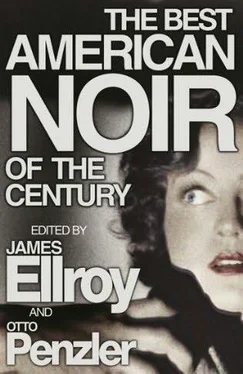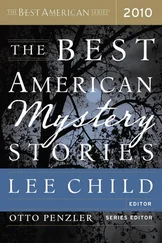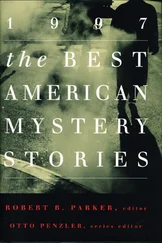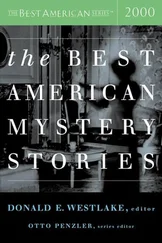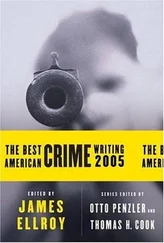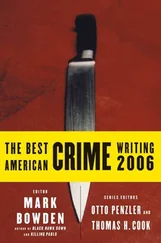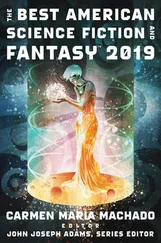The first time I laid eyes on the place was early evening. Fog — which seasonally rolled in at dusk, settling over the coastal flats and canyons until early afternoon the next day—was drifting ashore like willowy, ghostly scarves. I wore my best flannel shirt and a pair of jeans to the interview. My head was all but bald, my old man having given me a fresh trim with his electric clippers, a memento filched from one of his many former employers. Even though it was late June and the day was warm, I wished I’d brought a sweater, since the heavy mist down by the ocean dampened me to the bone. I could hear the surf once I crossed the empty highway, and I started thinking about what questions I might be asked during my interview and what sorts of answers I’d be forced to make up to cover a complete lack of experience. There was a good chance I’d be turned down for the job. After all, I was just a kid who had done nothing with his life beyond collecting debris in forests and fields and reading novels and other worthless books. Weren’t I so bent on getting clear of our house, pulling together money toward one day having a place of my own, unaffected by my shiftless father and moron brother, I’d have talked myself out of even trying. Tom called me a loser so often that, despite the contrarian waters running deep in me, I knew he wasn’t altogether wrong.
As I approached the miniature golf park, I was mesmerized by a ball of brilliance, a white dome of light in the mist that reminded me of some monumental version of one of those snow shaker toys, what on earth are they called? Those water-filled globes of glass inside which are plastic world’s fairs, North Pole dioramas, Eiffel Towers that, when joggled, fall under the spell of a miraculous blizzard. What loomed inside this fluorescent bell jar was a wonderland, a fake dwarf-world populated by real people, reminiscent of snow globe toys in other ways, too. The fantastic impossible scenes housed in each, glass or light, were irresistible. I walked through a gate over which was a sign that read bay side — for all ages. What lay before me, smaller than the so-called real world but larger than life, was a village of whirling windmills and miniature cathedrals with spires, of stucco gargoyles and painted grottoes. A white brick castle with turrets ascended the low sky, its paint peeling in the watery weather. Calypso’s Cave, the sixth hole. A fanciful pirate ship coved by a waterfall at the seventh. And everywhere I looked, green synthetic alleys. All interconnected and, if a bit seedy, very alluring.
A result of lying about my age, background, and whatever else, I got the job. When asked at dinner to describe what kind of work was involved, I told my father I was the course steward. In fact, my responsibilities fell somewhere between janitor and errand boy. Absurd as it may sound, I was never happier. Vacuuming the putting lanes; scouring the acre park and adjacent beach for lost balls and abandoned golf clubs; tending the beds of bougainvillea and birds of paradise; spearing trash strewn on the trampled struggling real grass that lay between the perfect alleys; skimming crud out of water traps and ornamental lagoons; retouching paint where paint needed retouching. If Bayside were a museum — and it was, to my eyes — I was its curator. The owner, a lean, sallow, stagnant man named Gallagher, seemed gratified by my attentiveness and pleased that I didn’t have any friends to waste my time or his. Looking back, I realize he was quietly delighted that I hadn’t the least interest in playing. What did I care about hitting a ball into a hole with a stick?
That said, I did become an aficionado, in an antiseptic sort of way. Just as I had about the classifications of seashells or the markings of dragonflies in times past, I read everything I could about the sport in the office bookcase, surrounded by framed photos autographed by the rich and famous who played here long ago. The history was more interesting than I imagined. In the Depression they used sewer pipes, scavenged tires, rain gutters, whatever junk was lying around, and from all the discards built their Rinkiedinks, as the obstacle courses were called, scale-model worlds in which the rules were fair and the playing field — however bunkered, curved, slanted, stepped — was truly level. Once upon a time, I told Molly, this was the classy midnight pastime of America’s royalty. Hollywood moguls drank champagne between holes, putting with stars and starlets under the moon until the sun came up. One of the earliest sports played outdoors under artificial lights, miniature golf was high Americana and even now, though it had a degraded heritage, was something finer than people believed.
* * *
My favorite trap in the park was the windmill, which rose seven feet into the soggy air of the twelfth green. Its blades were powered by an old car battery that needed checking once a week, as its cable connections tended to corrode in the damp, bringing the attraction — not to mention the obstacle — to a standstill. One entered this windmill by a hidden door at the back, which wasn’t observable to people playing the course, indeed was pretty invisible unless you knew it was there. Gallagher had by August learned to trust me with everything except ticket taking, which was his exclusive province when it came to Bayside, and about which I could not care less. So when, one evening, a couple complained to him that the windmill blades on 12 weren’t working, he handed me a flashlight, some pliers, a knife, and explained what to do. The windmill was at the far end of the park and I made my way there as quickly as possible without disturbing any of the players.
Once inside, I discovered a new realm. A world within a world. Fixing the oxidized battery posts was nothing, done in a matter of minutes. But then I found myself wanting to stay What held me was that I could see, through tiny windows in the wooden structure, people playing, unaware they were being watched. A girl with her mother and father standing behind, encouraging her, humped over the white ball, her face contorted into a mask of concentration, putting right at me, knowing nothing of my presence. One shot and through she went, between my legs, and after her, her mom and dad. They talked among themselves, a nice, dreary, happy family, in perfect certainty their words were exchanged in private. It was something to behold.
I stuck around. Who wouldn’t? Others passed through me, the ghost in the windmill, and none of them knew, not even the pair of tough bucks who played the rounds every night, betting on each hole, whose contraband beer bottles I’d collected that very morning. It became my habit, from then on, to grab time in the windmill during work to watch and listen. I found myself particularly interested in young couples, many of them not much older than I was, out on dates. Having avoided school since we came West, and being by nature an outsider, my social skills were limited. The physical urgency I felt, spying on these lovers, I sated freely behind the thin walls of my hiding place. Meanwhile, I learned how lovers speak, what kind of extravagant lies they tell each other, the promises they make, and all I could feel was gratitude that my brand of intimacy didn’t involve saying anything to anybody. The things I found myself whispering in the shade of my hermitage none of them would like to hear, either. Of that I was sure.
One evening, to my horror, Tom appeared in my peephole vista. What was he doing here? What gave him the right? And who was the girl standing with him, laughing at one of his maudlin jokes? He had a beer in his pocket, like the toughs. His arm was slung over the girl’s shoulder, dangling like a broken pendulum, and his face was rosy for once. They laughed again and looked around and, taking advantage of being (almost) alone, kissed. At first I stood frozen in the windmill whose blades spun slowly, knowing that if Tom caught me watching, he’d beat the hell out of me and back at home deny everything. But soon I realized there was nothing to fear. This was my domain. Tom could not touch me in my hideaway world. Much the same way I used to trespass his superiority with those words lifted out of books, I offered him the longest stare I could manage. Not blinking, not wincing, I made my face into an unreadable blank. Pity he couldn’t respond.
Читать дальше
Конец ознакомительного отрывка
Купить книгу
